As an amateur climber and photographer, I learned that photo climbing is far more difficult, than either photography or mountain climbing alone. Preparations are complex and requires a lot of attention to details. My recent Mt. Apo photo climb is a testament to this. Now, I’m sharing my personal experience of preparing (Part 1) and actually photo climbing (Part II) Mt. Apo. It is neither complete nor exhaustive, but it made our photo-climb to Mt. Apo less cumbersome and more fulfilling.
Having outlined my reasons above, let me start the nitty gritty of preparing for a photo-climb to Mt. Apo:
- [highlight background=”#fffb99″]Choose your itinerary to Mt. Apo carefully.[/highlight] Mt. Apo has several trails leading to the summit and not all sceneries can be seen in a single trail. Other trails are more difficult, requiring longer days, while some trails have access restrictions. You also need to learn about the locals or community you might pass along these trails as some might not allow taking photos or will ask for a fee. I suggest you pick that one with the most scenery you can get, easier, with known, consistent weather patterns,and a nearby alternative access or back up trail in case of emergencies. Of course, choose the safest trail you can get.
[hr] APO BOULDER FACE- A challenging and unique landscape to try your photography creativity
APO BOULDER FACE- A challenging and unique landscape to try your photography creativity
[hr]I chose the Kapatagan-Kidapawan Traverse trail because of the above reasons and because I haven’t pass by Kapatagan trail before. - [highlight background=”#fffb99″]Pick the people your climbing with. [/highlight] I prefer climbing with my longtime climbing buddies. We knew each other’s climbing habits and we easily adjust to any situations up there. It is very important that you let your companions know ahead of the climb, your goals for the climb so they too can adjust their expectations. Remember that these people will be your lifeline up there so communicating with them is a must.
I told my friends I would be very slow, stopping to take photos all the time which may drag them or worse bore them to death.
[hr]
[hr] I hired a guide to tail me just in case I might drift too far off the trail. A caution too on bringing alone a companion that has other ideas on climbing rather than what you generally have in mind. These are the people who complain a lot, makes too many attention getting acts, and drags you out of your camera. Solo photo-climbing was an option early on but I’m too scared yet for that. - [highlight background=”#fffb99″]Decide early which camera gears you’re bringing and which ones are not. [/highlight]I don’t have illusions about my photography skills, I’m a newbie and I still fumble with my camera gears. I’m scared to bring a single compact camera and hope I’d get superb photos just like what pro travel photographers do. So I compromised a bit. [highlight]My personal criteria is this; weight > necessity > monetary value.[/highlight]
I brought the lightest camera I have, an Olympus EP3 and my bulky Canon 50d. I paired my EP3 with a 45mm f1.8 lens (for cropped and portrait shots) and the 50D with 10-22mm for my UWA shots. Bringing two cam bodies on different focal range lens is much more efficient than bringing along one body and many lenses. It minimises changing of lenses where my cam body will be exposed to dirts and fungi. I didn’t bring any long range telephoto lens as I felt I’m not going to shoot any birds up there anyway. I also packed 3 SD/CF cards each, pair of reserve camera battery, a Benro A096 Angel tripod, a charger (just in case we’d camp in a community with electricity), zip locks (water sealing), rain cover/garbage bag, water desiccant and a sturdy Benpro Hip Belt Camera bag. These gears alone weighs more or less 5 kilos already so you have to fight that urged to bring everything in your photography arsenal. I mentioned monetary value as a criteria because there reports of robbery along the trail or even on camp sites. These gadgets always attract attention and chances are, it may just cost you your life when you bring it up there.
- [highlight background=”#fffb99″]Bring only essential climbing equipment.[/highlight]I decided early on that my back pack should be no more than 8kg (lower than 15% of my body weight) so I allotted 6kg for my personal climbing gears and 4 kgs my camera gear.
If you’re climbing with a group, you can save lot of weight off your back if you share group equipments like your tent or cooking utensils/burners. Also, meal planning with the group save you from packing in those RTEs in your backpack. I saved up on my dri fits and shorts, a lightweight fleece and raincoat. It’s pretty cold up in Mt. Apo so a thick sleeping bag an extra thick jacket and warmers is essential for me. I hired a guide to carry the remaining 10kg (mostly group gears and back up bag for the rainy weather) since I wouldn’t enjoy the climb anymore or shoot photos with too much weight on my back.
- [highlight background=”#fffb99″]Train. Of course you physically prepare yourself for a photo climb! [/highlight]Did I mention earlier that a photo climb is even more difficult than either climbing or photography alone? Photo-climbs entail frequent stops, drifting off the trail, exploring scenes along the way or even climbing up some rock or trees. If you’re not fit to do this, never risk yourself and your gears anyway.
Climbing is exhausting and when your exhausted, you don’t think anymore except finish your climb. My personal advice? You must be at least twice physically prepared to photo-climb Mt. Apo . Double your fitness and training regimen. Your camera gears, no matter how light, still adds up to your carrying weight. If your not fit to carry more than your regular carrying capacity, chances are you won’t get any good photos up there. It’s either you’re too tired to get photos or you’re too lazy to compose shots.;
There you go. I know a lot of you will say “I know these already!” or “Nothing new!”. The bottom line is the same – lot of preparation and attention to detail are needed to do a serious photo climb. So, were you able to photo climb Mt. Apo? (Please comment below with the link to your photo escapades 🙂 ). You may view some of my photos here or in my photoblog The Twelve Inches Behind (www.tweleveinchesbehind.com).









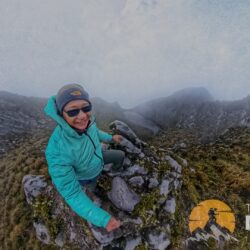
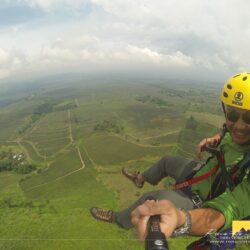
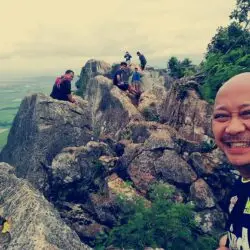
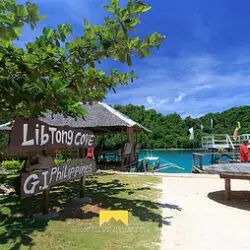
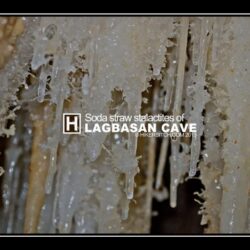





Hi Bundok, congrats for your blog and photos it is really amazing. Is it possible to join you on your trip or can you recommend somebody in Manila who can help my fiance? He is from Europe and he would like to go hiking here in the Philippines despretly but he doesn’t know anybody who does outdoor sports. If you can help him any way please contact him, his mail: gal.istvan@gmail.com.
Loren Belleza, Thank you for the kind words. If you fiance’s sched syncs with my outdoor sched why not? I’m not a pro though, as I only enjoy roaming around whenever Im off my day job.:) Should he be in the Philippines and wants to go to outdoor places around, maybe I can help refer a friend.
[…] Gears: My photo gears preparations for this climb is almost similar to the preparations I made when I photo climbed Mt. Apo. I packed less lens (an UWA and medium telephoto) and camera body this climb to ease up on my load. […]